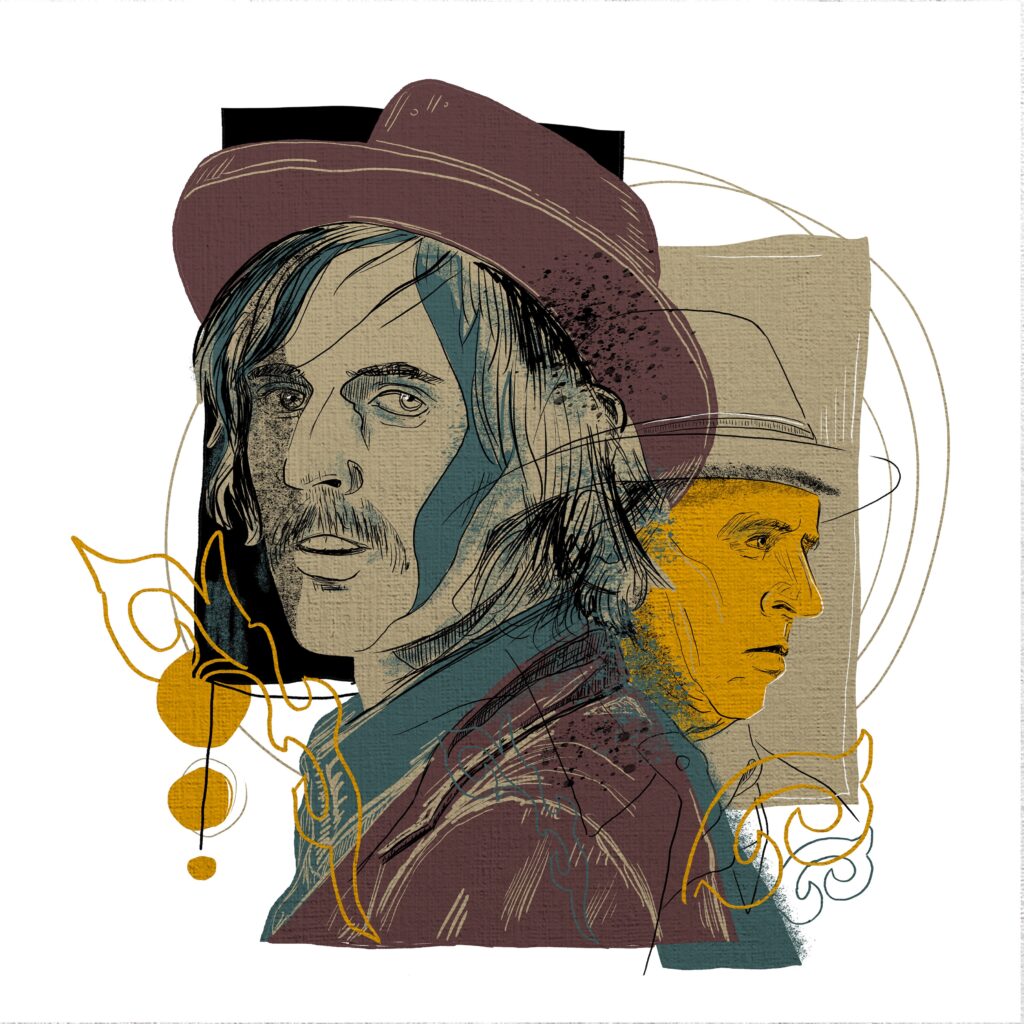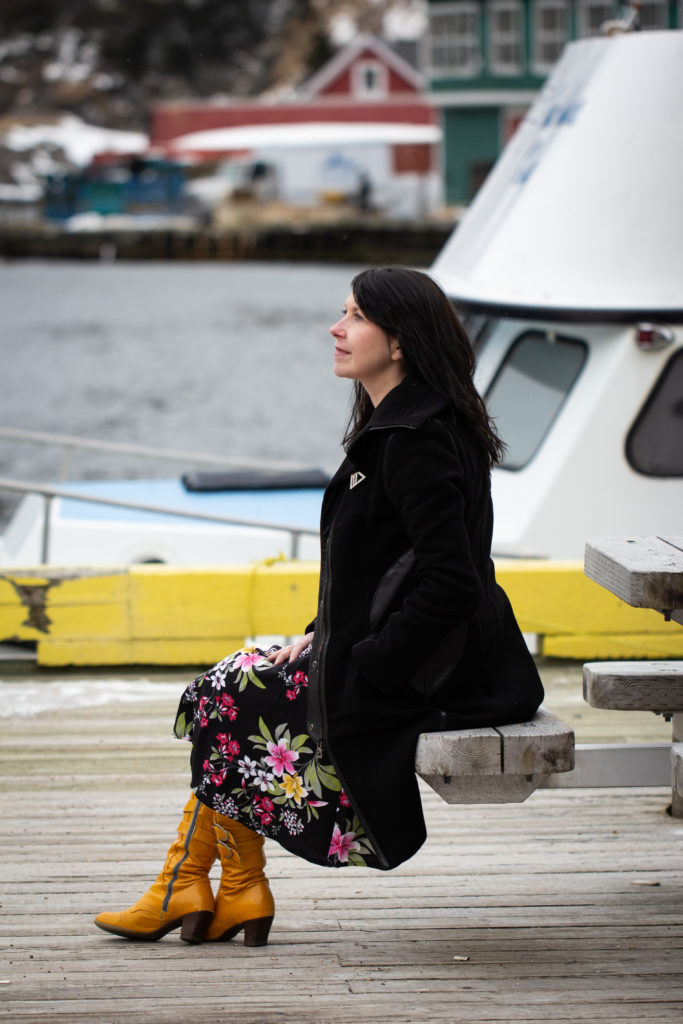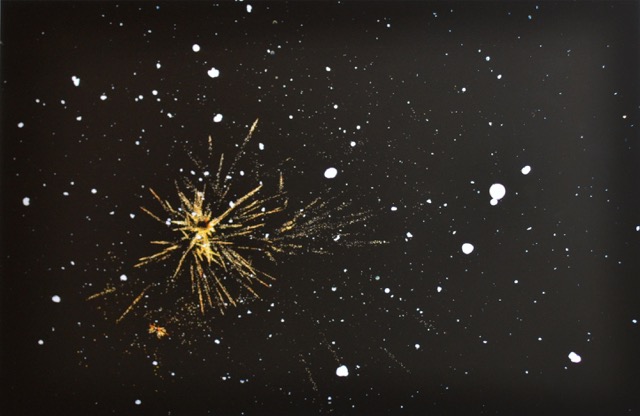Teresa Connors’ Immersive Audio-Visual Installation Currents at Sound Symposium XIX
BY Eva Crocker
July 2018

Photo by Shannon Lynn Harris.
Last week, I worked a few Box Office shifts at The LSPU Hall during the 19th annual Sound Symposium. On the first evening, I arrived for my shift with my hair still wet from a swim at the punch bowl. As I settled into the swivel chair behind the front desk to count the float, I noticed some kind of soundtrack was playing in the Second Space across the hallway.
It was layers of sound; piano notes over a steady ticking interspersed with chirps and a spectral howling that could have been wind or whale calls. The ticking had a beat to it but the rest of the piece resisted rhythm. The lack of a recognizable pattern stopped the sounds from fading into a background hum. I was aware of my brain trying to force the sounds into a predictable sequence as I ran through the opening tasks; printing the pre-paid tickets and alphabetizing them, checking the emails, recording an answering machine message with information about that night’s performance. The soundscape was like a siren song that eventually hauled me up out of my chair and over to the Second Space.
The lights were dimmed and a huge screen glowed bright white on the back wall. I had stumbled on Currents, Teresa Connors’ collaborative audio-visual installation with videography by Shannon Lynn Harris. Teresa was setting up; she was bent over a laptop with a mess of cords attaching it to several other machines. I stood in the doorway, being sure to listen for people wandering into the Hall looking for tickets.

Photo by Shannon Lynn Harris.
Four smaller, square canvases protruded from the large screen. Soon a different video played on each of them. They were of natural landscapes and were unmistakably filmed in Newfoundland; some are tight close-ups that focus the viewer’s attention on minuscule bits of nature, like three blades of grass moving with the wind or a drip of lime green slime sliding down a smooth rock into a tide pool. Other shots are wide and take in an entire beach, or look down over the side of a cliff so high that sea birds circling over the water look like small white smudges.
The contrasting perspectives in the videos evoke the complexity of an ecosystem, reminding us how tiny parts contribute to an overwhelmingly huge whole. Every so often the clips would change, cycling through more than 150 different shots of the landscape between Middle Cove Beach and Cape Spear. Just as with the soundscape, it was impossible to decipher a pattern in the rotation of the video clips, unfolding in a randomness that mirrors the capricious natural environment here in Newfoundland.
Teresa noticed me in the doorway and waved me over to a small table next to her computer, where she was fiddling with a rock wrapped in wires and electrical tape. I crossed the room, completely abandoning my post at the Box Office. She explained the laptop was streaming live wind data collected from personal weather stations on the Avalon and translating that into sound. Another feed incorporated sounds triggered by data about the movement of marine life in the area. This information was collected by Dr Maxime Geoffroy at the Marine Institute and converted into sound by computer code Teresa wrote.
She invited me to put my finger on the pulse sensor and explained it would gather data about my heart rate, which would trigger sounds and an animation of water droplets falling on the large screen behind the smaller canvases. I placed my finger there and Teresa used an iPad mounted on a music stand to calibrate the technology to detect my heart rate.
Suddenly ripples started appearing on the large screen, like you see on the surface on of a pond at the beginning of a downpour. On two of the smaller screens the tide tugged unfurled waves back out into the bay; another showed mint-coloured lichen on a grey rock; a third played water gurgling in and out of a tide pool. I could feel the bunny-rabbit thump of blood coursing through my heart and it was correlating with the steady tick in the soundscape.
Teresa is interested in Scottish anthropologist, Tim Ingold’s idea of meshworks of agency. For her, the piece is about the relationship between different elements that make up an environment. I suggested that Currents was a way of interpreting the landscape that was being documented through the live weather data and videography. But the word interpreting doesn’t feel right to Teresa – it gives the artist too much credit. She believes the artist and the environmental forces play equally important roles in the creation of the piece.
“For me it’s a process of agency between human and non-human bodies. The agency of the wind, the agency of the person on the hill with the camera, it all feeds into the system and one is not more important than the other.”
When I put my finger on the pulse-sensor I wasn’t expecting to be so intensely impacted by my heartbeat becoming part of the installation. The gig at the Hall is one of two part-time jobs I’m working this summer to save up for a move to Montreal in September. I’ve been so wrapped up the logistics of finding an apartment and flying three pets out of the province that I had totally avoided thinking about what it means to me to be leaving this landscape behind. When I heard my heart beating amongst sounds generated by the wind and the movement of sea creatures in this area, I was reminded how much I’ve been shaped by the physicality of this place.
While you’re here:
… we hope you enjoy our website! Our online audience is growing every month, and that means that more people like you are seeing and reading incredible new work by Newfoundland and Labrador writers and artists. We want the people of the province to have access to high quality, contemporary writing about the unique and ever-evolving culture of this place, so we’re offering our online content for free. That said, if you’re able to help us keep providing this opportunity to both readers and creators in Newfoundland and Labrador, we encourage you to subscribe to our print magazine. Subscription details are here. If you ‘d like to support us with a donation or legacy gift (tax receipts available,) please contact us at rcohoe@mun.ca.



